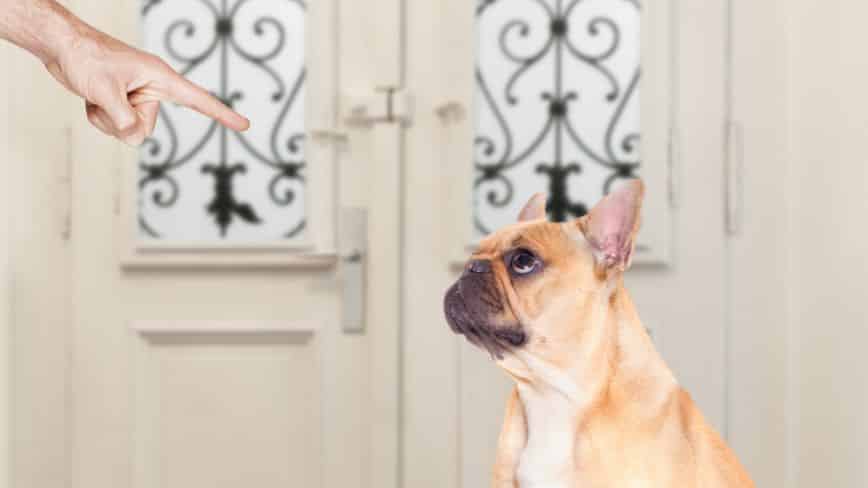No More Toy Tantrums: Tips on Encouraging Your Dogs to Share and Play Together

Sharing is Caring!
Introduction
Do you have two dogs or more dogs and are constantly dealing with toy tantrums? If so, you’re not alone. Many pet owners struggle to get their furry friends to share toys peacefully. But don’t worry! With a few simple tips, you and many dog owners can learn how to get dogs to share toys without any drama. In this blog post, we’ll give some tips on encouraging your pups to play together happily and safely – all while teaching them the importance of sharing. So if you’re ready for some peace in your household, read on for our top tips on getting dogs to share toys!
The Importance of Sharing
Can dogs share toys? Yes, dogs can share toys. Sharing toys can help promote positive relationships and healthy playtime between dogs:
- Sharing is an important skill for dogs to learn, as it can help them build positive relationships with other dogs and people. Teaching dogs to share their toys can prevent possessive behavior and reduce the risk of aggression towards other dogs or people.
- Sharing also promotes healthy playtime and socialization for most dogs, which is important for a dog’s overall well-being. Dogs that learn to share their toys and play nicely with others are more likely to have positive interactions with other dogs and people, which can increase their confidence and reduce stress and anxiety.
- In addition, teaching dogs to share their toys is a great way for dog approaches to reinforce positive behaviors and build a stronger bond between dogs and their owners. By emphasizing the importance of sharing, dog owners can create a positive and enjoyable environment for their dogs, leading to happier and healthier pets.
Effective Tips for Teaching Dogs to Share Toys
Understanding Causes of Resource Guarding in Dogs?

Resource guarding in dogs is a normal dog behavior in which the dog attempts to protect items such as toys, food, or other objects from being taken away. It can be caused by the dog’s emotional response, anxiety, insecurity, or fear that another dog may take the item away from them. This behavior can manifest itself through growling, snapping, and even biting if the object of their affection is taken away. To address this behavior, it’s important to understand why dogs resource guard in the first place. Identifying resource guarding in dogs involves paying attention to dog body language and behavior when they are around certain items or spaces.
Signs of Resource Guarding
| Behavior | Description |
|---|---|
| Stiff body posture | Dogs may become rigid and tense when around certain items or spaces they are guarding. |
| Growling or snarling | Dogs may vocalize their possessiveness by growling, snarling, or showing their teeth. |
| Snapping or biting | Dogs may escalate their behavior by snapping or biting, especially if their possessiveness is challenged or threatened. |
| Guarding behavior | Dogs may physically guard items or spaces, such as standing over their food bowl or refusing to let other dogs or people approach their toys. |
| Possessiveness | Dogs may display possessive behavior, such as hiding or hoarding items, or displaying aggression when someone tries to take them away. |
| Anxiety or fear | Some dogs may exhibit anxiety or fear when their resources are threatened, such as cowering, shaking, or hiding. |
Creating a positive environment

How to teach a dog to share toys, it’s essential to create a positive environment that promotes playtime and sharing. Providing ample toys and playtime for family members ensures that each dog has access to their own items and enough opportunities to play without feeling the need to guard their resources. Designating specific toys for each dog can also help prevent resource guarding toys between dogs and promote sharing.
For example, one dog may prefer stuffed toys while the other enjoys playing with balls. By providing each dog with their preferred toy, they are less likely to become possessive over the other’s toys. It’s also important to avoid punishments and negative reinforcement, as this can create a negative association with playtime and make the dogs less likely to want to share with each other. Instead, positive reinforcement, such as praise and treats, can be used to encourage good behavior and reinforce sharing habits.
How to Train Resource Guarding
Teaching dogs basic commands such as “Leave it,” “Drop it,” and “Trade” can help them learn to share their toys with the other animals, dogs or people.
Leave it
To teach “Leave it,” start by first approaching dog, placing a treat on the ground and covering it with your hand. When the dog shows interest in the treat, say “Leave it” and reward them with a different treat. Repeat this until the dog learns to leave the treat on the ground without being told to do so.
Drop it
To teach “Drop it,” most dog owners start by playing with a toy with the dog and then offering them a treat in exchange for the toy. When the dog drops the toy to take the treat, say “Drop it” and reward them with the treat. Repeat this until the dog learns to drop the toy on command.
Trade
To first teach your dog “Trade,” start by offering the dog a treat in exchange for a toy. When the dog drops the toy to take the treat, say “Trade” and give them the treat. Repeat this until the dog learns to give up the toy in exchange for a treat. These commands can be taught many dogs, through positive reinforcement training and consistency, and are an effective way to teach a dog to share their toys and avoid resource guarding toys between dogs.
Set up playtime for the dog
Setting up structured playtime is how to get dogs to share toys with each other. Teaching dogs to take turns is a useful technique for preventing resource guarding behavior and promoting sharing. Start by giving each dog their own toy and letting them play with it for a set amount of time. After that time is up, switch the toys and let them play with the other dog’ toy. This helps the dogs learn to take turns and share their toys.
Playing with toys together can also help dogs learn to share. Start by playing with the dogs with their toys, tossing the toys back and forth between them. This helps the dogs see that it’s fun to play together and share their toys.
Reinforcing good behavior during playtime is also important. Rewarding the dogs with treats and praise for good behavior, such as playing nicely with each other and sharing toys, can encourage them to continue this behavior in the future. With consistent practice, dogs can learn to become less possessive of their toys with other dogs and learn to enjoy sharing their toys during playtime.
Avoid punishing a dog for refusing to share

Avoid punishing a dog for refusing to share their toys, as this can create a negative association with playtime and make the dog less likely to want to share in the future. Punishment, such as scolding or physically reprimanding the dog, can also increase stress and anxiety, which can lead to more possessive behavior. Instead, positive reinforcement and praise should be used to encourage good behavior and reinforce sharing habits. If a dog is not willing to share, it’s important to approach the situation with patience and understanding. It may take time and consistent training for a dog to learn to share their toys, especially if they have a history of possessive behavior.
With patience, consistency, and positive reinforcement, dogs can learn to share their toys and enjoy playtime with other dogs and people.
Clean up as much as possible
Cleaning up after playtime and meals and removing any potential sources of conflict is an important step in promoting sharing and preventing possessive behavior. Dogs can become possessive of items such as empty food bowls, pieces of bones, or toys with stuffing that has been torn out. In addition, crumbs and other debris on the ground can trigger possessive behavior and competition between dogs. By cleaning up as much as possible, owners can eliminate any potential triggers for possessive behavior and create a safe and enjoyable environment for playtime
Addressing problems and setbacks
Despite our best efforts, sometimes dogs may continue to exhibit possessive behavior towards their toys. If your dog won’t share toys with other dogs, it’s important to address the issue before it escalates into aggression or injury. Identifying signs of aggression or resource guarding, such as growling or snapping, is crucial in addressing the issue. It’s also important to understand why dogs guard things in the first place, as this can help in preventing future instances of possessive behavior. Seeking professional help, such as a certified dog trainer or behaviorist, can be beneficial in addressing and correcting resource-guarding behavior. These professionals can provide personalized training sessions and advice on how to address the issue.
Consistency and patience are key when addressing problems and setbacks in teaching dogs to share toys. It’s important to continue training and reinforcing good behavior, even if progress is slow. With patience and persistence, dogs can learn to become less possessive of their toys and learn to share them with other dogs.
Conclusion
In conclusion, teaching dogs to share toys requires patience, consistency, and positive reinforcement. By creating a positive environment, teaching basic commands, and introducing structured playtime, dogs can learn to become less possessive of their toys and enjoy sharing them with other dogs. It’s important to address any signs of aggression or resource-guarding behaviors and seek professional help if necessary. Through consistent training and reinforcement of good behavior, dogs can learn to share their toys and enjoy playtime with other dogs. Remember to always use positive reinforcement and praise to encourage good behavior. With these tips, you can successfully teach your dogs how to share toys and enjoy playtime together.
Sharing is Caring!
About The Author
PawCool Team
Related Categories: Dogs | Dog Health & Care | Dog Stories
Latest Articles

Never Miss A Thing!
All pet stories & guides you care about








